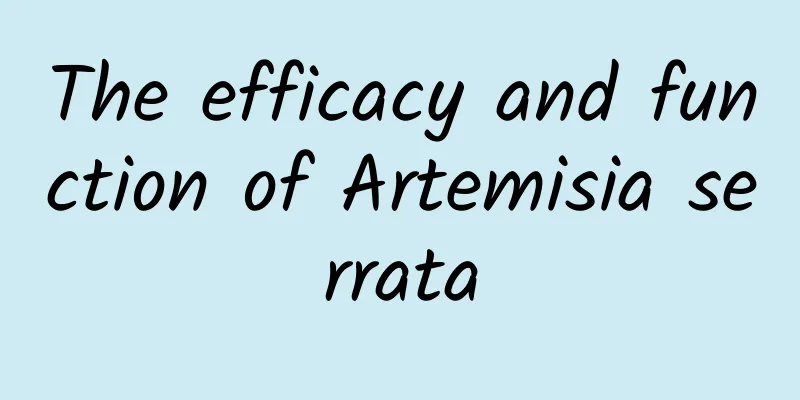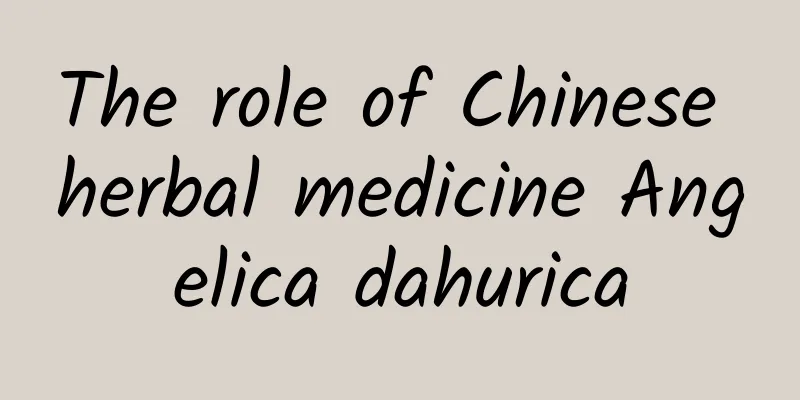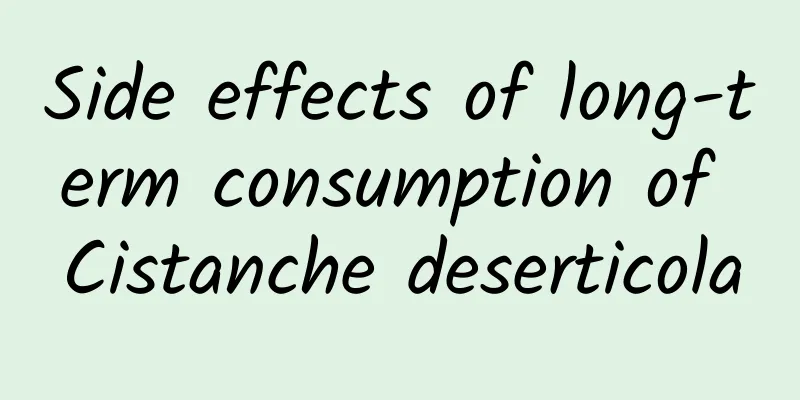How to distinguish the authenticity of Cordyceps sinensis

|
Cordyceps sinensis is a precious medicinal material that looks like an insect. Many middle-aged and elderly people use it for health care or to recuperate and treat diseases. Because Cordyceps sinensis is relatively precious, there are fewer of them sold on the market and they are more expensive. However, some people bought expensive Cordyceps sinensis from the market and found out that it was fake, which was heartbreaking. So, how can we distinguish the authenticity of Cordyceps summer vegetables? How to distinguish the authenticity of Cordyceps sinensis? People who don't know much about Cordyceps sinensis don't know where to start? Then experts suggest that you can identify it based on its specifications, number of legs, appearance and other aspects. If you want to know specifically how to distinguish the authenticity of Cordyceps sinensis, you may wish to follow and take a closer look. Cordyceps sinensis, also known as Chinese Cordyceps, also known as summer grass winter insect, abbreviated as Cordyceps. Cordyceps sinensis is a traditional Chinese precious medicinal material. It is formed by the Cordyceps sinensis fungus of the family Corgiaceae in the order Hypocreales, which parasitizes the bat moth larvae in the soil of alpine meadows, causing the larvae to become rigid. Under suitable conditions, long stick-shaped fruiting bodies grow out of the head ends of the rigid insects in summer (that is, a complex of the fruiting bodies of the Cordyceps sinensis fungus and the rigid insect sclerotia (larvae corpses)). It is mainly produced in the high-altitude areas and snow-capped mountain grasslands of Qinghai, Tibet, Xinjiang, Sichuan, Yunnan, Gansu, Guizhou and other provinces and autonomous regions in China. Cordyceps sinensis is a complex of the fruiting body and corpse of the larvae of the ergot fungus Cordyceps sinensis that parasitizes the larvae of the bat moth insects. It is a traditional precious tonic Chinese medicinal material with multiple functions such as regulating immune system function, anti-tumor, and anti-fatigue. How to identify Cordyceps sinensis Specifications: The body of Cordyceps sinensis is 3 to 5 meters long and 0.3 to 0.8 meters in diameter, shaped like a three-sleeping old silkworm. Of course, within this range, the longer and thicker the Cordyceps sinensis is, the better the quality. Number of legs: Authentic Cordyceps sinensis has 8 pairs of legs on the ventral side, and the 4 pairs located in the middle of the body are very obvious. The stroma grows from the head of the insect body and is slightly swollen at the top. It can be up to 4-7 cm long and about 0.3 cm in diameter. Appearance: Genuine Cordyceps sinensis has obvious lines when broken open, and there is a "V"-shaped black core in the middle of the Cordyceps, and some may also be a black dot. This black core is actually the worm's digestive line. How to eat Cordyceps sinensis The best way to take Cordyceps sinensis is: decoction, stewing, or soaking in medicinal wine. Decoction means boiling Chinese medicine, which usually takes 40 minutes to 1 hour. If there are other Chinese medicines in the prescription, Cordyceps sinensis is usually decocted separately to prevent its active ingredients from being absorbed by the residue and wasted. To make the soup, usually simmer the Cordyceps sinensis and old duck together over low heat for 1-2 hours. To make medicinal wine, put Cordyceps sinensis in white wine or yellow wine and soak it for a period of time before drinking. No matter which of the above methods you use, you can eat Cordyceps sinensis in the end. When choosing brands, you can choose old brands like Tong Ren Tang or Fulinmen, which have relatively reliable quality. If it is a business gift, Tong Ren Tang is a more appropriate choice, as the packaging is beautiful and classy. If it is for home use, choose Fulinmen, which is the most affordable, authentic and of good quality. Boil water and drink it as tea instead of brewing it with boiling water. This method is simple and effective. Usually, Cordyceps sinensis needs to be boiled for 6 to 10 minutes at a time. Note that it should be cooked over a low heat and boiled for a short time. Drink the water immediately after it boils and add water while drinking. When the Cordyceps sinensis water is the darkest in color, it is the most nutritious. The water at this time must not be wasted. Usually Cordyceps water goes through a process from light to strong and then back to light again, and the aftertaste is also very long. When the Cordyceps water becomes light or even white, do not drink it. You can eat the Cordyceps. A pot of Cordyceps sinensis tea can be drunk for at least half an hour, and water should be added 4 to 6 times. Stewing (steaming) with meat: When stewing (steaming) meat, put Cordyceps into the meat (in the belly of duck or pigeon) and stew over low heat until the meat is cooked. Use a grinder to grind the Cordyceps sinensis, put it into a capsule box, carry it with you, and take it regularly every day. Common Cordyceps Counterfeit Products Cordyceps sinensis: also known as Hawks Cordyceps. The fruiting body grows from the center of the insect's head and does not cover the entire insect head; the top of the fruiting body is round, the four legs in the middle are not too prominent, the ring pattern is not as obvious as that of the authentic Cordyceps, and the grass head is more likely to be forked. (This also happens with genuine Cordyceps, but you may only see one fork among hundreds of them. In this case, you have to identify it based on other features.) Other appearance features are basically the same. Some Cordyceps sinensis have whitish bodies, which are easier to identify, while others are yellow, which are more difficult to identify. Liangshan Cordyceps: The body of the insect is short and thick, with a brown-black surface, numerous ring marks, and covered with rusty hairs. The fruiting body is long, much longer than the body of the insect, up to 30 cm, with slender and tortuous branches, and the head of the fruiting body is round and cylindrical or rod-shaped. The foot is not obvious. A few "grasses" have branches at the top. Xinjiang Cordyceps: The body of the insect resembles a silkworm, the surface is dark red to purple-red, and the texture of the insect body is relatively hard. There is usually no substigma. (The above are counterfeits) Counterfeit Xinjiang Cordyceps is easier to identify. Earth silkworm: The "worm body" is spindle-shaped. Slightly curved, with fewer rings, only 3 to 15. Appearance is light yellow. There is also a kind of "Cordyceps flower", also known as "Northern Cordyceps", which is not Cordyceps sinensis. It is an artificially cultivated Cordyceps fruiting body. The culture medium imitates the various nutrients contained in natural insects, including grains, beans, eggs and milk, etc. It belongs to a kind of fungus. It is very similar to common edible fungi such as shiitake mushrooms and oyster mushrooms, except for the different strains, growth environment and growth conditions. In order to increase its own value, merchants gave it a beautiful name, calling it "Cordyceps Flower", but it does not have any of the effects of Cordyceps sinensis, has not achieved any clinical results, can only be used as a food ingredient, and has not yet been listed as a traditional Chinese medicine; but because some merchants promote its effects and ingredients, this food ingredient currently has a large market and is used as Cordyceps sinensis by many hotels and pharmacies. There are so many things on the market outside that many unscrupulous merchants will take advantage of the opportunity to counterfeit products, just like the precious Cordyceps sinensis can also be counterfeited. Therefore, in order to prevent everyone from being deceived, we remind everyone to learn how to correctly identify Cordyceps sinensis to avoid buying fakes. Eating it will not only be of no benefit to the body, but may even be harmful to your health. |
>>: The efficacy and function of Guizhi Fuling Capsule
Recommend
2-year-old boy found 6 live worms in his eyes! Change these habits now...
Expert in this article: Li Mingwu, Chief Physicia...
At least 10 mm per year! Is our city sinking? | Expo Daily
300 million people in my country will be affected...
Alibaba Financial Report: Alibaba's net profit in Q3 of fiscal year 2023 was 46.815 billion yuan, a year-on-year increase of 138%
Alibaba recently released its third quarter repor...
Effects of Chinese Rhizoma Cyathulae and Chinese Wolfberry Wine
Various types of alcohol play an important role i...
Eliminate the "ecological killer", this time it is the MeeMee team that made a great contribution!
Recently, Canada goldenrod It has appeared again ...
Licorice root powder benefits and effects
Licorice is a widely used medicine in traditional...
Can mugwort be soaked in water and drunk?
Mugwort is also known as Artemisia argyi. It has ...
Drink juice or eat fruit? You may have been choosing the wrong one!
Fruits are nutritious and healthy, and are an ess...
Choosing the right one is more important than choosing the right husband.
There are many weeds in the fields, and they are ...
Drone delivery drones have great uses in high-risk environments
Recently, my country's Double-Tailed Scorpion...
What are the medicinal values of Agkistrodon acutus?
Agkistrodon acutus is a very common snake, also k...
Want to lose weight but keep getting fatter? Maybe you're not getting enough sleep
In Chinese food culture, rice and noodles are com...
The efficacy and function of purple stem
The development of Western medicine has brought s...
To protect the environment, they put backpacks on cows to collect farts
Review expert: Zhu Guangsi, member of Beijing Sci...
The efficacy and function of the leaves of the stone windmill
As people's research on traditional Chinese m...









